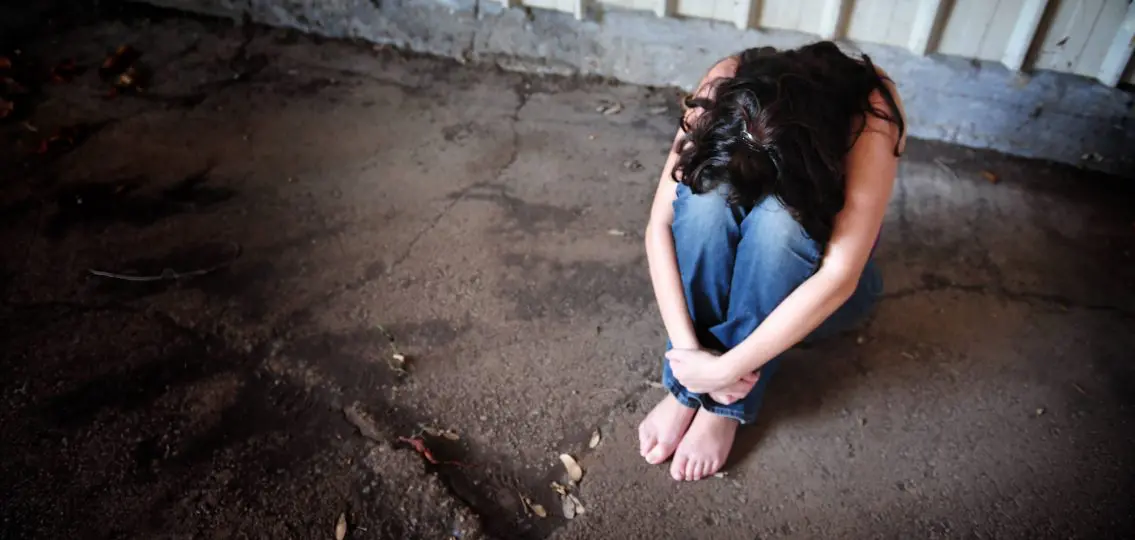I cringed when I saw the email from my son’s teacher. Subject line: Bathroom Issue.

According to the email, my 12-year-old son pulled down his pants to urinate; then, with pants still down, he turned around and poked another student in the stomach. My kid also jumped up on the urinal ledge.
I’ve been parenting boys for more than 20 years now, yet I was not immediately sure how to handle this situation.
Tween and teen boys have been messing around in bathrooms and locker rooms for decades, but in the era of #MeToo, simply writing off such behavior as “boys will be boys” seems more inadequate and inappropriate than ever. I don’t want my son to become the next Harvey Weinstein or Bill Cosby.
Parents and educators around the country are grappling with the same issue.
In fact, in some places, boys who “pants” others are being threatened with suspension or expulsion for “sexual harassment.” That’s what happened when 12-year-old Braden pulled down the pants of a friend at recess.
“His principal explained that if Braden would have accidentally grabbed the other boy’s’ boxers and exposed his private parts, Braden would have been expelled under their sexual harassment policy,” says Marnie Bellini, Braden’s mom. Both mother and son were startled and surprised by the administration’s reaction.
“I initially didn’t realize the severity of the situation, because I didn’t think it would constitute sexual harassment,” Bellini says, “and Braden was all freaked out and scared.”
The principal decided not to suspend Braden for his actions but gave him an official warning and recorded the incident in her “principal record.” By the time the Bellinis left the principal’s office, Braden was in tears.
Parents and educators are much less likely than adults of years past to ignore or gloss over misbehavior; “boys will be boys,” we understand, is no longer an acceptable explanation for behavior that harms another.
But are suspensions, expulsions, and harsh punishments the best way to respond to tween boys’ antics? Are they the best way to teach our sons respect for other people? Sex education expert Amy Lang cautions against such harsh reactions. “Adults need to understand that bathroom talk, humor, and pantsing are all developmentally typical,” Lang says.
“Shaming and punishing boys for how they are sorting out the world of sexuality doesn’t do them any good at all.”
A kinder, more compassionate, developmentally appropriate approach is a much better way to help boys develop a mature understanding of sexuality and consent.
How to Talk about Consent
Most parents begin conversations about consent early in life. We teach our children that no one has the right to touch their bodies without permission, and we try, day in and day out, to teach our kids that they don’t have the right to hit, touch, or harm anyone else.
As our children approach puberty, our anxiety ramps up. We see what’s on the horizon—crushes, breakups, experimenting—and we suddenly realize that a bad decision at this point in life could have lifelong ramifications. More than any previous generation, we are acutely aware of the problems of sexual harassment and consent. We have seen powerful men we once admired accused of sexual misconduct, and we’ve witnessed the pain their actions have wrought upon their victims.
None of us wants to raise sons who sexually assault or abuse others. And we turn our gaze from the news to the boys before us and vow:
We will do better. We will not allow the boys of this generation to prey upon others.
Our boys, meanwhile, are simply trying to figure out life. “At the tween stage, they are simultaneously completely infatuated with and completely embarrassed by their bodies and other people’s bodies,” says Al Vernacchio, sexuality teacher at Friends’ Central School in Wynnewood, Pennsylvania. “They’re also just at the beginning of realizing they can be powerful and are getting a lot of messages from the outside about what a powerful man is.”
Many of those messages are confusing. Today’s boys are searching for a foothold in a culture that still assigns value to men based on strength and accomplishment. They’re trying to figure out what it means to be a man at a time when our societal definition of “man” is evolving. And unlike previous generations, they’re surrounded by voices pointing to “toxic masculinity” as harmful and a potential root of sexual misconduct.
The controversial buzzword toxic masculinity refers to a version of manhood that emphasizes aggression and power, but of course that’s not the only way to be a man. “Too many boys are getting the message that all masculinity is toxic all the time, and that’s a really damaging message,” Vernacchio says. “I want to help boys acknowledge the toxic aspects of masculinity, but not fall into the trap of thinking that to be masculine is to be toxic.”
The tween and teenage years are a great time to help boys wrestle with these mixed messages.
“We can help them start to differentiate between the masculinity we want them to emulate, admire, and respect, versus toxic behavior,” Vernacchio says.
Boys, believe it or not, are emotionally vulnerable and constantly looking for external validation of their worth. As a result, they’re acutely sensitive to public embarrassment and shaming. Yet parents and educators often use shame-based approaches to respond to boys’ well-intentioned but poorly thought-out attempts at connection and humor (such as my son’s bathroom incident).
A harsh response to boys’ misdeeds is rarely productive, says Andrew Irwin-Smiler, Ph.D., a licensed therapist and author of Dating and Sex: A Guide for the 21st Century Teen Boy. “Shaming someone doesn’t lead them to a more nuanced understanding of the topic,” Smiler says. “Instead, it typically leads them to avoid the topic, the person who shamed them, or both.”
A better approach is to seize the teachable moment—and that’s what I did with the bathroom incident. While talking with my son, I learned that he’d been pretty confident in his audience of boys in the bathroom. Most were his friends, and he was sure they’d find his behavior funny.
“That’s the tricky thing,” I told him. “It’s hard to read other people sometimes. Sometimes, you think they’re up for something, but they’re not. The only way to know for sure is to ask.” And with jokes, of course, no one asks first—which is why mistakes often happen in that context. Mistakes, though, provide a chance to talk not only about the incident at hand, but also about bigger issues.
I then took the conversation a bit further: “Sometimes,” I said, “you might think that someone wants you to kiss them, or wants to have sex with you, but the only way to know is to ask.”
How to Teach Consent
Whether or not your kid is the one horsing around in the bathroom, now is the time to help him understand the importance of appropriate behavior and respect for others. Here are some expert-approved ways to teach boys about boundaries and consent:
1. Introduce “everyday consent.”
Consent doesn’t apply only to sexual situations; consent is about respecting other people’s boundaries. Vernacchio teaches students that consent is required any time you’re going to interact with someone else’s body, property, or reputation. Want to borrow your friend’s jacket? Ask for permission (consent) first.
“We need to help boys first understand consent in a low-risk, not-fraught situation,” Vernacchio says. “The more practice they get at everyday consent, the better they’ll do when things are more intense.”
Parents can also demonstrate everyday consent by knocking on their sons’ doors and asking for permission before swooping in for a hug. “We need to show our boys what consent means and how it works,” Lang says.
2. Discuss power dynamics.
An imbalance of power makes consent tricky. As we’ve seen in countless adult situations, a person may go along with an activity if they feel that objecting would put them at risk of harm. Boys can understand this dynamic when you put it in terms they can understand. Talk to them about “ringleaders,” people with power in social groups. Your son is probably acutely aware of the ringleaders at his school, and likely knows—from experience—exactly how hard it is to resist the ringleaders’ spoken and unspoken directives. Fail to comply, and risk ostracization.
You can use these examples to help boys understand how “power disrupts consent and makes it really hard to say no,” Vernacchio says. Then help boys deconstruct the messages telling them to always seek the upper hand.
“Often our default to boys is, ‘Don’t let anybody make a chump out of you,’” Vernacchio says. “You can interrupt and redirect those messages to things like, ‘Stick to your sense of right and wrong.’”
Such conversations can also help boys learn to stop and reflect before acting. “Teach boys to ask the question, ‘Am I doing this because I think it’s going to give me more power or status over someone?’” Vernacchio advises.
3. Teach boys the power of “no.”
Boys often get the idea that saying no is weakness, which makes it hard for them to object if a friend goes too far and hard for them to accept “no” from others. Instead, teach them that true strength is saying what you really mean. A boy who knows that he can say no if he doesn’t want to do something is more likely to respect a “no” from other people.
“If boys are in the habit of saying yes when they mean no, and no when they mean yes, that’s what they’re going to expect from other people,” Vernacchio says. “I tell students, ‘The biggest responsibility we have in all consent situations is to actually say what we mean.’”
As your boys get older, your conversations can become more explicit. Together, brainstorm ways to ask for a kiss and deflect unwanted sexual attention. Discuss news stories about sexual harassment and misconduct. Listen at least as much as you talk.

“All of this is messy and takes time,” Vernacchio says. “But if we want to raise a generation of kids who have a better understanding of consent than we did, we have to have these conversations.”




